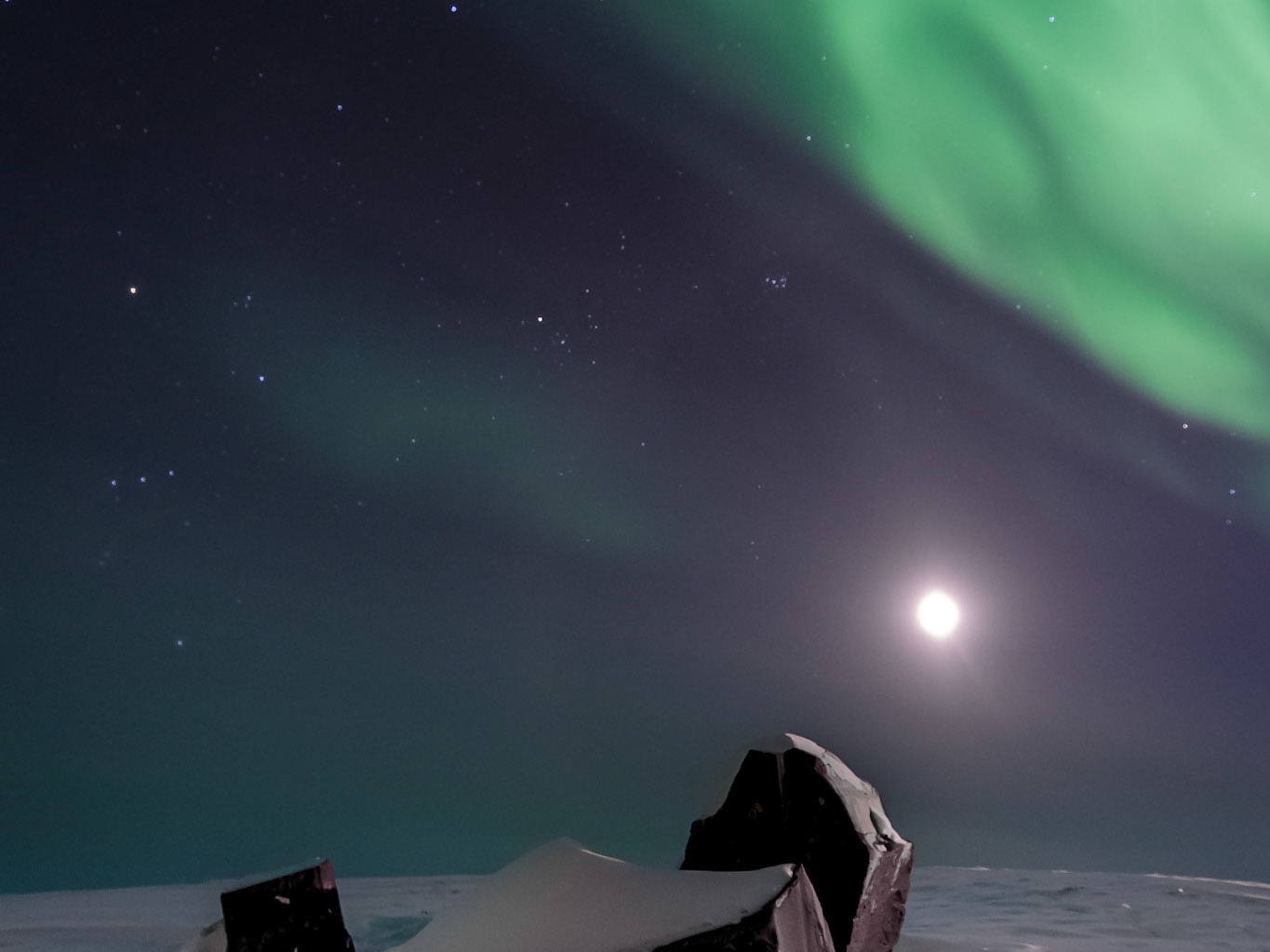A tree and orange pole mark the edge of the Ice Road. Snowmobile and dog sled trails cut across the Ice Road in several places.
On the Ice Road watching the sunrise.
When the temperature with windchill is -50C, sometimes this is the best view one can brave.
Heading to Dettah on the Ice Road, you start travelling East, and quickly come to a graceful right hand curve. That sun is bright. When the temperature is very cold, or there is any amount of wind, ice fog, or blowing snow are a common occurrence.
Heading south towards Dettah before sunrise.
Travelling south, the ice road heads towards the mouth of Yellowknife Bay which opens onto Great Slave Lake, the 10th largest lake in the world.
The view directly south from the Ice Road. Being the 10th largest lake in the world, you've got a long way to go before making landfall on the other side.
Maintaining the Ice Road
For newcomers, cracks on the Ice Road may be a bit uncomfortable of a thought. But they occur all over the Ice Road. Stand close to one as traffic drives by and you're bound to hear a crack, and possibly feel the ice move up and down.
Gravel is laid down on the Ice Road for traction. When the road first opens, the sun is still low on the horizon. As March approaches, and the sun gets higher, expect to see more bare ice as you travel along.
These aren't just oddly placed homes. They're houseboats! This view is from the north end of the Ice Road. The buildings in the foreground are all houseboats. Behind, on top of the hill is Pilot's Monument, which provides a commanding view of Joliffe Island, the house boats, and ski/floatplane operations that occur on Great Slave Lake.
Stopping to view the houseboats. The snow and ice on the back of my van is as hard as cement.
The houseboats make for excellent aurora photos as well.
An ice fishing hut on Great Slave Lake.
Dog sledding on Great Slave Lake. It was -37C when I took this photo. Standing still the windchill brought it down to -50C. I can only imagine how cold it would have felt on this sled.
A lone tree on the south end of the Ice Road. I think the sunset makes for a lovely companion.
The same tree underneath the aurora last year.
Come to Yellowknife, and you're bound to hear about our ravens. Make sure to ask about the Flaming Raven. Halfway down the Ice Road and this raven came swooping over me.
A view of downtown Yellowknife from the Ice Road. This area was known as New Town as Yellowknife expanded up the hill from Old Town .
Houseboats nestled close to Joliffe Island.


